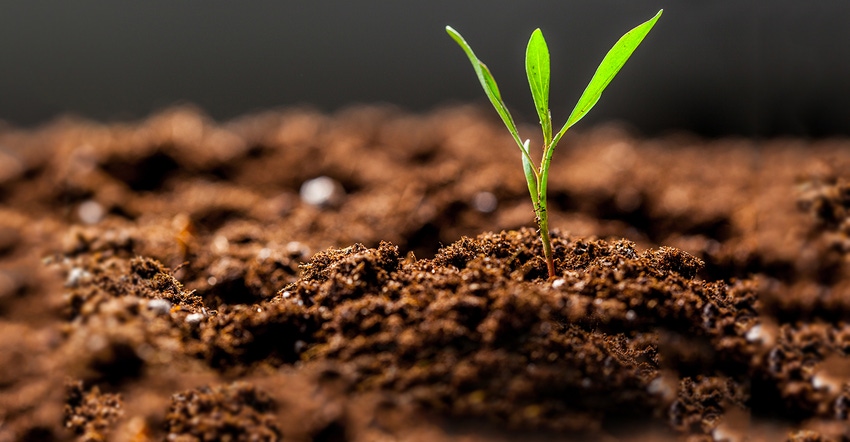February 2, 2018

By Heidi Johnson
The phrase “soil health’’ is getting a lot of buzz these days. There is still some debate on what soil health means, but most people agree that healthy soil includes a diverse and abundant microbial community. The vast diversity of life in the soil is something that scientists and farmers are just starting to understand and appreciate. We don’t yet understand the role that all of the microbes play in the soil — this is an area that is being actively researched. But there is one old soil friend that farmers have appreciated for decades: the rhizobia bacteria.
As everyone reading this article likely already knows, rhizobia are a type of bacteria that can capture atmospheric nitrogen, fix it into a plant-usable form, and then trade it to the plant, specifically legumes, in exchange for food (carbohydrates). To facilitate this exchange, rhizobia bacteria actually live in nodules right on the plant’s roots. Although this is an old story (the first rhizobia species was identified in 1882), it is a service provided by soil microbes that many of us take for granted. Making nitrogen fertilizer is an extremely energy-intensive process, using pressures of up to 3,600 psi and temperatures of up to 900 degrees F. So the fact that these tiny little bacteria can create nitrogen from the air is pretty amazing.
Nitrogen hogs
These little bugs save farmers an extraordinary amount of money. Ask any farmers which of their crops uses the most nitrogen, and their answer will undoubtedly be corn. Actually, soybeans are by far the biggest nitrogen hogs, needing between 3 and 5 pounds per bushel of yield. But if a soybean plant is partnered with a nitrogen-fixing bacteria, farmers don’t need to apply any nitrogen fertilizer to maximize their soybean crop.
Specific rhizobia bacterial species partner with specific legumes, so farmers do need to make sure their soil has the bacteria to match whatever legume they are planting. Farmers typically ensure this by inoculating their legume seeds with the appropriate bacteria. But management practices can influence the need for inoculant.
For example, farmers don’t have to inoculate when they regularly (every three years) plant soybeans because the constant presence of a host keeps the bacterial populations going. Soil acidity can negatively impact bacterial populations, so farmers may need to reinoculate if they don’t keep their soil at optimal pH. Environmental conditions, such as more than a week of flooding or an extended drought, can also create conditions that kill rhizobia populations, necessitating the addition of an inoculant.
Most farmers are already familiar with this story, but I am using this as a reminder that a soil bacteria is to thank for saving us so much nitrogen fertilizer every year. This also serves as a good reminder of how managing and cultivating soil bacteria should be an important component of all crop management plans. Nitrogen fixation is just one service provided by the soil microbial community. Although other services may not have such a single notable impact on a farmer’s bottom line, those services — such as nutrient cycling, disease protection and enhanced nutrient acquisition — still have the potential to reduce fertilizer and pesticide applications and save farmers money.
Food for soil microbes
So how do you increase and protect the abundance and diversity of the soil microbial community? The addition of organic materials such as manure and cover crops can provide food for soil microbes to live off of when there are no growing crops. You wouldn’t think of not feeding your crop plants, so you need to take the same approach to feeding your soil. If there is nothing available to eat, the life in the soil will die.
Tillage can also impact the diversity of beneficial soil life. Although this article is mostly focused on bacteria, there is also beneficial fungi present in the soil. Mychorrhizal fungi form beneficial symbiotic relationships with crop plants to greatly increase the uptake of water and nutrients. Tillage destroys the networks of mychorrizal fungi, making them less effective in procuring nutrients and water for crop plants. Reducing or eliminating tillage can help maintain these beneficial fungi.
Cover crops can also serve as alternative hosts for mychorizzal fungi to help maintain their populations.
An appreciation and understanding of the life underneath your crops can help you manage your crops more effectively. Farmers have tweaked their production practices to harness the power of rhizobia bacteria, offset production costs and improve the sustainability of their cropping systems. Could you be making better use of the rest of the life in the soil?
Johnson is the Extension crops and soils agent in Dane County, Wis.
You May Also Like




